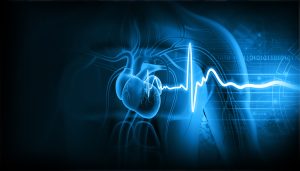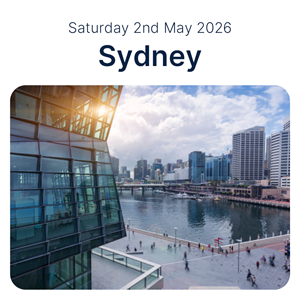Articles / Managing driving risk in patients with obstructive sleep apnoea


writer
Respiratory and Sleep Medicine Physician; Woolcock Institute of Medical Research; Staff Specialist and Medical Director of Respiratory Failure Services, Royal Prince Alfred Hospital; Consultant, Rural Outreach Services
0 hours
These are activities that expand general practice knowledge, skills and attitudes, related to your scope of practice.
0.5 hours
These are activities that require reflection on feedback about your work.
0 hours
These are activities that use your work data to ensure quality results.
These are activities that expand general practice knowledge, skills and attitudes, related to your scope of practice.
These are activities that require reflection on feedback about your work.
These are activities that use your work data to ensure quality results.
Fatigue is one of the “Fatal Five” causes of deadly motor vehicle accidents, alongside speeding, alcohol or drug impairment, failure to wear a seatbelt, and distraction. While often linked to shift work or long hours, fatigue can also indicate an underlying sleep disorder such as obstructive sleep apnea (OSA).
OSA is common but often difficult to detect because it presents with non-specific symptoms such as tiredness, low energy, or poor concentration that are not always clearly linked to a sleep disorder.
Although OSA is often seen as a sleep quality issue, its impact on driving, cognition, and public safety makes early identification and management essential.
Driving risk increases significantly when OSA goes untreated, with affected individuals estimated to be 2–7 times more likely to be involved in a motor vehicle accident. These “fall-asleep” incidents often occur late at night or in the early morning. They typically involve a single vehicle veering off the road, and show no signs of braking, indicating the driver was fully asleep. Such accidents are more likely to be severe or fatal, particularly when the driver is alone.
OSA affects up to 10% of adult men and 5% of women when both symptoms and sleep study findings are considered. It is characterised by repeated upper airway obstruction during sleep, causing intermittent hypoxia, sleep fragmentation, and increased sympathetic activity. Risk is higher in men and people with obesity, type 2 diabetes, hypertension, or atrial fibrillation.
Symptoms vary but often include habitual loud snoring, witnessed apneas, and episodes of choking or gasping during sleep. Many patients wake unrefreshed despite adequate sleep and report excessive daytime sleepiness, especially during passive activities such as reading, watching TV, or sitting in traffic. Other symptoms may include morning headaches, difficulty concentrating, memory issues, and frequent nighttime urination (nocturia).
A patient who reports either falling asleep while driving or another sleepiness-related incident should be assessed urgently. These are strong indicators for further investigation, even if other symptoms seem mild.
Excessive daytime sleepiness is the primary symptom linked to driving risk. However, not all sleepiness is caused by OSA. Contributing factors include sleep restriction, extended wakefulness, shift work, circadian disruption, sedative medications, depression, and other medical conditions like diabetes or neurological disorders.
Fatigue and daytime sleepiness are often used interchangeably, but have different clinical meanings. Daytime sleepiness refers to a tendency to doze off in passive or even active situations, such as watching TV or driving. Fatigue is a general sense of low energy or exhaustion, without the urge to sleep.
When patients report either, particularly in the context of driving, further questioning is warranted. Both states can affect driving, but sleepiness (especially from sleep disorders like OSA) is more directly linked to crashes.
Patients may not mention sleep concerns unless prompted, as fatigue is often seen as normal and signs of sleepiness can be subtle. Ask direct, targeted questions to uncover symptoms patients may not recognise or report.
Keep in mind that patients with obesity, type 2 diabetes, hypertension, or atrial fibrillation require a lower threshold for suspecting OSA due to the strong association with sleep-disordered breathing.
When OSA is suspected, use validated screening tools such as the STOP-BANG, Berlin, or OSA-50 questionnaires to stratify risk and guide further investigation.
The Epworth Sleepiness Scale (ESS) is an additional subjective measure of daytime sleepiness. A score of 8 or more suggests abnormal sleepiness, while 11 or higher indicates moderate to severe levels. A positive questionnaire combined with an elevated ESS supports direct referral for a Medicare-funded Level 1 (in-lab) or Level 2 (home-based) sleep study, without needing specialist review.
It’s important to note that quantifying the apneic events per hour using the Apnea-Hypopnea Index (AHI) is not always reflective of daytime function or driving risk. Some patients with high AHI may feel well, while others with mild OSA may report serious sleepiness. Both objective and subjective findings should be considered.
Once OSA is confirmed, management depends on severity and clinical context. Mild cases may be managed in general practice, provided there is no significant sleepiness or occupational driving risk. Patients with moderate to severe OSA, particularly those in safety-critical roles or with ongoing symptoms, should be referred to a sleep specialist.
CPAP is the first-line therapy for moderate to severe OSA. It effectively reduces sleepiness, with benefits often noticeable within days. However, adherence is a common barrier with up to half of patients ceasing CPAP use within a year. Outcomes can be improved by providing education, support, and regular follow-ups to patients.
Mandibular advancement splints are an alternative for patients with mild to moderate OSA who cannot tolerate CPAP. Other interventions such as weight loss, positional therapy, and in selected cases, upper airway surgery may also be appropriate.
Not all patients respond predictably to treatment. Even with optimal CPAP use, fewer than 10% may continue to experience residual sleepiness. These patients should be referred to a sleep physician for further evaluation.
Referral is also recommended when the diagnosis is unclear or if there are complicating cardiovascular, respiratory, metabolic, neurological, or psychiatric conditions, as well as in cases where the OSA is moderate or severe.
Referral is also advised for commercial or safety-critical drivers. In some cases, the sleep specialist may perform a Maintenance of Wakefulness Test (MWT) to objectively assess alertness in a quiet, low-stimulation environment. In certain jurisdictions, commercial drivers require annual review and documentation of CPAP use, with objective testing when necessary.
Before confirming a patient is fit to drive, especially after starting CPAP, verify compliance, symptom improvement and treatment effectiveness. Ideally, CPAP should be used for at least six hours per night, with low residual AHI and clear improvement in alertness. The best way to assess compliance and treatment effectiveness is to ask for the CPAP data download – or ask the patient to show you the CPAP data on their device. This enables objective confirmation and includes usage time, pressure settings, leak rates, and residual respiratory events.
Practice tip: CPAP providers can supply a usage report, or patients may access it via connected apps. Ask them to bring a recent download to their review to support decision-making.
If the patient feels well, reports no daytime sleepiness, and the CPAP data shows good control, driving can usually resume. If concerns remain, further questioning is needed.
Patients with untreated or symptomatic OSA should avoid long-distance, night-time, or monotonous driving until symptoms are under control. If a patient reports falling asleep at the wheel, restrict driving immediately and arrange further assessment.
For private licence holders, driving can resume once symptoms are well managed and adherence to treatment is established. Commercial drivers must meet stricter criteria and require confirmation of ongoing treatment effectiveness through specialist review.
Based on this educational activity, complete these learning modules to gain additional CPD.

Allergen Introduction – Practical Tips for GPs

Oral Contraception Update

What do we do With High Triglycerides?

An Update on Heart Failure in Primary Care

writer
Respiratory and Sleep Medicine Physician; Woolcock Institute of Medical Research; Staff Specialist and Medical Director of Respiratory Failure Services, Royal Prince Alfred Hospital; Consultant, Rural Outreach Services

Very overestimated
Moderately/slightly overestimated
Quite accurate
Moderately/slightly underestimated
Very underestimated
Listen to expert interviews.
Click to open in a new tab
Browse the latest articles from Healthed.
Once you confirm you’ve read this article you can complete a Patient Case Review to earn 0.5 hours CPD in the Reviewing Performance (RP) category.
Select ‘Confirm & learn‘ when you have read this article in its entirety and you will be taken to begin your Patient Case Review.





